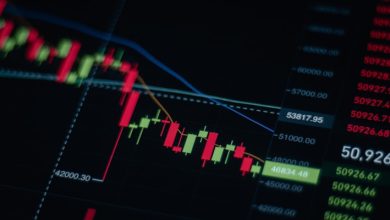The Role of Whales in Driving Market Trends and Liquidity

- The Impact of Whale Investors on Market Trends
- How Whales Influence Liquidity in Financial Markets
- The Power of Whales: Driving Price Movements in Stocks
- Understanding the Behavior of Whales in Trading
- Whale Accumulation: A Signal for Market Direction
- The Relationship Between Whales and Market Volatility
The Impact of Whale Investors on Market Trends
Whale investors, also known as institutional investors, have a significant impact on market trends due to the large amounts of capital they have at their disposal. These investors are capable of making substantial trades that can move the market in a particular direction. Their actions can create momentum in a certain stock or asset, influencing other market participants to follow suit.
Whales are often seen as market leaders, with their trades serving as signals for smaller investors to make their own moves. When a whale investor enters or exits a position, it can cause a ripple effect throughout the market, leading to increased volatility and liquidity. This can result in sharp price movements that can either drive up or drag down the value of an asset.
The presence of whale investors can also impact market sentiment. Their actions can create a sense of FOMO (fear of missing out) among other investors, leading to increased trading activity and heightened speculation. This can further fuel market trends and contribute to the overall direction of asset prices.
It is essential for market participants to closely monitor the actions of whale investors to gain insights into potential market trends. By analyzing the trading patterns of these institutional players, investors can make more informed decisions about their own trades and positions. Ultimately, understanding the impact of whale investors on market trends is crucial for navigating the complexities of the financial markets.
How Whales Influence Liquidity in Financial Markets
Whales, in the context of financial markets, refer to large institutional investors or traders who possess significant capital to influence market trends and liquidity. These whales can have a profound impact on the buying and selling activities within the market, leading to price fluctuations and increased trading volumes.
One way in which whales influence liquidity in financial markets is through their ability to execute large trades that can move the market in a particular direction. By strategically buying or selling large quantities of assets, whales can create momentum that attracts other traders to follow suit, thereby increasing liquidity in the market.
Moreover, whales often have access to advanced trading tools and technologies that allow them to analyze market data and identify profitable opportunities before the general public. This early insight enables whales to make informed trading decisions that can further impact market liquidity.
Additionally, whales can use their influence to manipulate market sentiment and drive trends in their favor. By strategically releasing information or making public statements, whales can create a sense of urgency or fear among other market participants, leading to increased trading activity and liquidity.
In conclusion, whales play a crucial role in driving market trends and liquidity in financial markets. Their ability to execute large trades, access advanced trading tools, and manipulate market sentiment can have a significant impact on the overall liquidity and stability of the market.
The Power of Whales: Driving Price Movements in Stocks
Whales in the stock market refer to large institutional investors or individual traders who have a significant amount of capital to invest. These whales have the power to influence price movements in stocks due to the sheer size of their trades. When whales buy or sell large quantities of shares, it can create ripples in the market, causing prices to move in a certain direction.
The presence of whales in the market can lead to increased liquidity, as their large trades can attract other investors to buy or sell shares. This can create more trading activity and tighter bid-ask spreads, making it easier for investors to enter or exit positions.
Whales are closely watched by other market participants, as their actions can signal potential trends in the market. For example, if a whale starts buying shares of a particular stock, it could indicate that they believe the stock is undervalued and poised for growth. Other investors may follow suit, leading to a surge in buying activity and driving up the stock price.
On the other hand, if a whale starts selling off shares of a stock, it could signal that they believe the stock is overvalued or facing challenges. This can cause other investors to panic and start selling as well, leading to a decline in the stock price.
Overall, the power of whales in driving price movements in stocks highlights the importance of monitoring their actions and considering their impact on market trends. By understanding how whales operate and the influence they can have, investors can make more informed decisions and potentially capitalize on market opportunities.
Understanding the Behavior of Whales in Trading
Understanding the behavior of large market players, known as whales, is crucial in comprehending how they influence market trends and liquidity. Whales are investors or institutions with substantial capital that can significantly impact the price of an asset through their trading activities. By analyzing the behavior of whales, traders and investors can gain valuable insights into market dynamics and make more informed decisions.
Whales often have the power to move markets due to the sheer size of their trades. They can create buying or selling pressure that ripples through the market, causing price fluctuations and influencing overall market sentiment. By closely monitoring whale activity, traders can anticipate potential price movements and adjust their strategies accordingly to capitalize on market trends.
One common strategy employed by whales is to accumulate or dump large quantities of an asset over a period of time to manipulate prices in their favor. This can create artificial supply or demand levels, leading to price distortions that smaller traders may not be able to compete with. By understanding these tactics, traders can better navigate volatile market conditions and avoid being caught on the wrong side of a trade.
Whale Accumulation: A Signal for Market Direction
Whales in the financial market refer to individuals or entities with significant capital that can influence asset prices. When whales start accumulating a particular asset, it often serves as a signal for the market direction. This accumulation can indicate confidence in the asset’s potential growth, prompting other investors to follow suit.
Observing whale accumulation patterns can provide valuable insights into market trends and liquidity. By tracking their buying and selling activities, traders and analysts can gain a better understanding of where the market may be headed. Additionally, whale accumulation can create momentum in the market, driving prices up as more investors jump on board.
However, it’s essential to note that whale accumulation is not always a foolproof indicator of market direction. Whales can also manipulate prices to their advantage, creating false signals for unsuspecting investors. Therefore, it’s crucial to consider other factors and conduct thorough analysis before making trading decisions based solely on whale activity.
The Relationship Between Whales and Market Volatility
Whales, or large institutional investors, play a significant role in driving market trends and influencing liquidity in the financial markets. The relationship between whales and market volatility is a complex one, with whales often being able to move markets with their large trades. When whales enter or exit a position, they can create significant price movements, leading to increased volatility in the market.
Whales are known to have a considerable impact on market sentiment and investor behavior. Their actions can trigger buying or selling frenzies among retail investors, leading to exaggerated price swings. This can create opportunities for profit for those who are able to anticipate and react to whale activity.
Market volatility driven by whales can present both risks and opportunities for investors. On one hand, increased volatility can lead to higher trading costs and greater uncertainty in the market. On the other hand, it can also create opportunities for profit for those who are able to navigate the market effectively.



